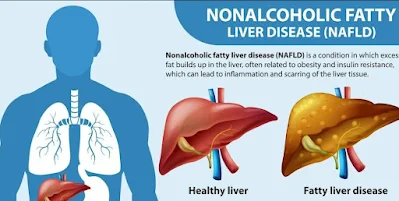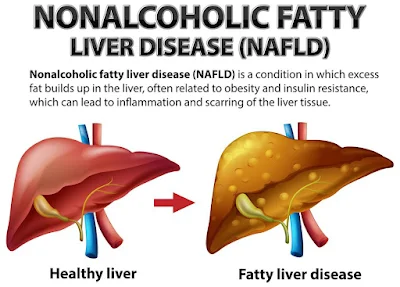Nonalcoholic fatty liver disease (NAFLD) is a prevalent condition that can have serious implications for liver health. In this guide, we will explore the causes and symptoms of NAFLD, as well as the various treatment options available to manage and improve the condition. Whether you have been diagnosed with NAFLD or are seeking information for a loved one, this guide will provide valuable insights into understanding and addressing this liver disease.
What is Nonalcoholic Fatty Liver Disease (NAFLD)?
 |
| Image Credit Goes To Freepik |
Nonalcoholic fatty liver disease (NAFLD) is a condition characterized by the accumulation of fat in the liver, not caused by excessive alcohol consumption. It is often associated with obesity, insulin resistance, and metabolic syndrome. NAFLD can range from simple fatty liver, which usually does not cause symptoms, to nonalcoholic steatohepatitis (NASH), which can lead to inflammation and liver damage. If left untreated, NAFLD can progress to more severe liver conditions, such as cirrhosis and liver cancer. It is important to understand the causes, symptoms, and treatment options for NAFLD in order to effectively manage and prevent further complications.
Causes of Nonalcoholic Fatty Liver Disease.
 |
| Image Credit Goes To Freepik |
The exact cause of nonalcoholic fatty liver disease (NAFLD) is not fully understood, but it is believed to be a combination of various factors. The primary risk factor for NAFLD is obesity, particularly excess abdominal fat. Other risk factors include insulin resistance, type 2 diabetes, high blood pressure, high cholesterol levels, and metabolic syndrome. Certain medications, such as corticosteroids and tamoxifen, can also contribute to the development of NAFLD. Additionally, genetic factors and certain medical conditions, such as polycystic ovary syndrome (PCOS) and sleep apnea, may increase the risk of NAFLD. It is important to address these underlying causes in order to effectively manage and treat NAFLD.
Symptoms and Signs of Nonalcoholic Fatty Liver Disease.
 |
| Image Credit Goes To Freepik |
Nonalcoholic fatty liver disease (NAFLD) often does not cause any noticeable symptoms in its early stages. However, as the disease progresses, some common signs and symptoms may start to appear. These can include fatigue, weakness, abdominal pain or discomfort, enlarged liver, and yellowing of the skin and eyes (jaundice). In more severe cases, NAFLD can lead to complications such as liver fibrosis, cirrhosis, and liver cancer. It is important to seek medical attention if you experience any of these symptoms or if you have risk factors for NAFLD. Early detection and intervention can help prevent further liver damage and improve outcomes.
Diagnosing Nonalcoholic Fatty Liver Disease.
Diagnosing nonalcoholic fatty liver disease (NAFLD) typically involves a combination of medical history, physical examination, blood tests, imaging tests, and sometimes a liver biopsy. During the medical history, your doctor will ask about your symptoms, risk factors, and any medications or supplements you may be taking. A physical examination may involve checking for signs of liver enlargement or tenderness. Blood tests can help assess liver function and check for elevated levels of liver enzymes and other markers of liver damage. Imaging tests, such as ultrasound, CT scan, or MRI, can provide detailed images of the liver and help evaluate the extent of fat accumulation and any associated liver damage. In some cases, a liver biopsy may be recommended to confirm the diagnosis and assess the severity of liver inflammation and fibrosis. It is important to consult with a healthcare professional for an accurate diagnosis and appropriate management of NAFLD.
Treatment Options for Nonalcoholic Fatty Liver Disease.
 |
| Image Credit Goes To Freepik |
Treatment options for nonalcoholic fatty liver disease (NAFLD) depend on the severity of the condition and any associated complications. In many cases, lifestyle changes are recommended as the first line of treatment. This includes adopting a healthy diet, engaging in regular physical activity, and losing weight if necessary. These lifestyle changes can help reduce fat accumulation in the liver and improve overall liver health. Additionally, managing any underlying conditions, such as diabetes or high cholesterol, is important in the treatment of NAFLD. Medications may also be prescribed to control symptoms or manage complications. For example, medications may be used to lower cholesterol levels, control blood sugar, or reduce inflammation in the liver. In severe cases of NAFLD, where there is significant liver damage or the development of complications such as cirrhosis, a liver transplant may be necessary. It is important to work closely with a healthcare professional to determine the most appropriate treatment plan for NAFLD.
Comments
Post a Comment